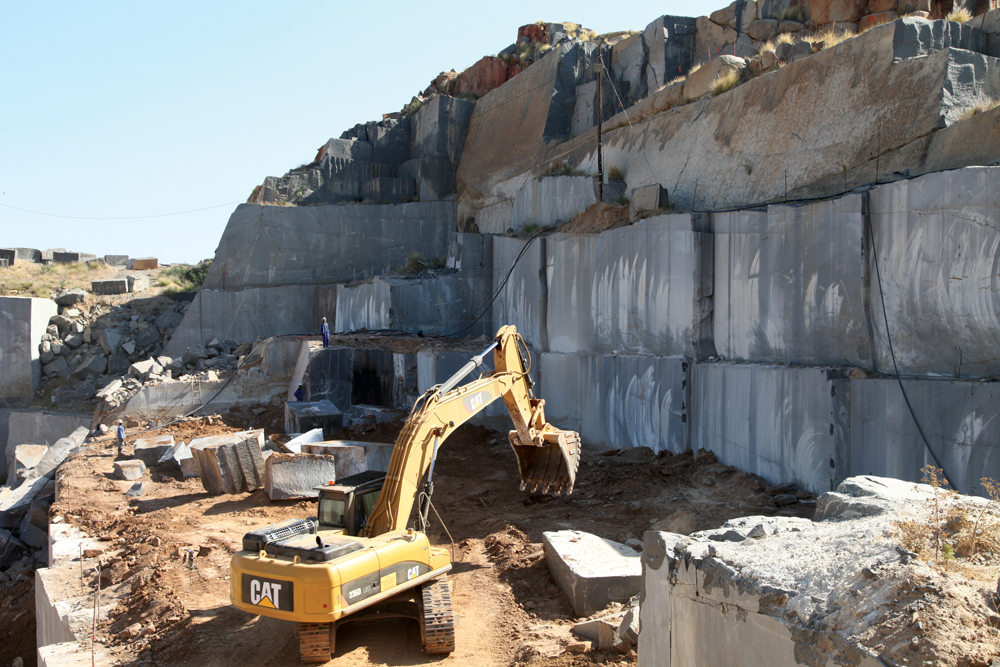The Covert Treasures: Exploring Granite Quarries in South Africa
The Covert Treasures: Exploring Granite Quarries in South Africa
Blog Article
Introducing the Mysteries of Granite Quarrying: Where Toughness and Beauty Meet
The globe of granite quarrying is a realm where the raw toughness of nature assembles with human creativity to create frameworks that stand the examination of time with an air of style. From the depths of quarries to the meticulous sprucing up in workshops, the procedure of changing granite right into architectural wonders is a complicated dance of custom and innovation. As we peer right into the midsts of this old craft, we start to uncover the concealed ins and outs that shape the very significance of our developed environment.
The Beginnings of Granite Quarrying
In the record of architectural background, the origins of granite quarrying are shrouded in a tapestry of old craftsmanship and geological marvels. Dating back to old Egypt and Mesopotamia, the extraction of granite from quarries marked the beginning of a journey that would at some point lead to the production of a few of the globe's most iconic frameworks.
Granite quarrying's roots can be mapped to the experienced craftsmens that recognized the stone's toughness and aesthetic allure. Through a mix of primitive tools and large decision, these very early quarry workers unearthed granite blocks that would come to be the foundation of civilizations.
As human beings evolved, so did the strategies of quarrying granite. The Romans, renowned for their design expertise, developed advanced approaches for drawing out granite to build monoliths, holy places, and roadways that stood the test of time.
The legacy of these ancient quarrying techniques continues to shape modern-day design, with granite staying an icon of strength and beauty in building and construction tasks around the world. (granite quarries in south africa)
Devices of the Quarrying Profession
The evolution of granite quarrying techniques from ancient worlds to modern-day times highlights the critical duty played by the devices of the quarrying profession in forming the industry's techniques. In old times, quarrying tools were basic, frequently containing chisels, hammers, and wedges made from products like bronze or iron. These devices required considerable manpower and time to extract granite obstructs from quarries.

In addition, the introduction of pneumatically-driven tools and high-powered machinery has actually substantially minimized the physical labor required in quarrying procedures, enhancing employee security and efficiency. As the quarrying industry remains to innovate, the tools of the profession stay at the leading edge of driving development and forming the future of granite removal.
Extracting Blocks of Granite
Using precision machinery and progressed techniques, the removal of granite obstructs from quarries has actually become a sophisticated process in the contemporary quarrying market. Managed blasting strategies are then employed to damage apart the granite into workable areas.

Polishing and Completing Methods
To accomplish a remarkable surface on granite blocks, skilled artisans use a series of thorough polishing and ending up methods. After the first extraction and shaping procedures, the granite obstructs undertake a detailed sprucing up phase to improve their all-natural beauty and toughness.
Along with sprucing up, completing methods are used to additional refine the granite's look. These methods may include flaming, developing, or cleaning, each offering one-of-a-kind structures and surfaces to suit different visual preferences. Flaming, for example, includes subjecting the granite surface to high temperatures to develop explanation a harsh, distinctive surface, perfect you can try these out for outside applications where slip-resistance is crucial. Refining, on the other hand, supplies a matte surface that is smooth to the touch, ideal for interior kitchen counters and floor covering. By carefully choosing and applying these brightening and completing strategies, artisans can change raw granite blocks right into beautiful items that display both toughness and sophistication.

Environmental Influence and Sustainability
With the expanding focus on ecological awareness in the market, granite quarrying methods are progressively looked at for their effect on all-natural sources and long-lasting sustainability. In addition, the transportation of granite from quarries to processing facilities generates carbon emissions, even more contributing to ecological destruction.
To mitigate these effects and make certain sustainability in granite quarrying, industry stakeholders are embracing various procedures. Applying innovative innovations to minimize power consumption and water usage, redeeming quarried land for environmental remediation, and advertising responsible sourcing techniques are some methods being employed. Accreditations such as the Forest Stewardship Council (FSC) and the Leadership in Power and Environmental Layout (LEED) aid consumers determine ecologically friendly granite items.
Conclusion
In conclusion, granite quarrying is a procedure that calls for specialized devices and strategies to essence blocks of granite and polish them to a high degree of finish. While the ecological impact of quarrying can be considerable, initiatives are being made to boost sustainability methods in the industry. Overall, granite quarrying is a fragile equilibrium his explanation in between harnessing the strength and style of this all-natural stone while minimizing its influence on the setting.
Report this page